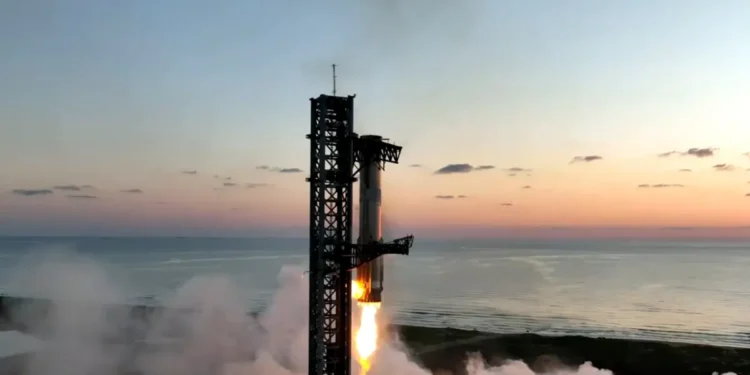In a monumental moment for space exploration, SpaceX successfully returned its Super Heavy booster to its launch site in Texas, marking a historic achievement in the world of aerospace engineering. As the Starship soared into the skies for the fifth time, it solidified its status as the most powerful rocket ever built. However, the true spectacle came with the landing—a feat that demonstrated not only SpaceX’s capabilities but also Elon Musk’s resolve to silence critics who question his ambitions.
The event unfolded in a thrilling seven minutes, during which the nearly 400-foot-tall spacecraft reached the edge of space before making a precision landing back on Earth. The Super Heavy, which had launched the Starship, was delicately caught by the “Mechazilla” tower’s chopstick-like arms—a sight Musk himself described as “bananas stuff.” This engineering triumph is a testament to SpaceX’s commitment to creating reusable rockets, a necessity for Musk’s long-term vision of making humanity a multi-planetary species.
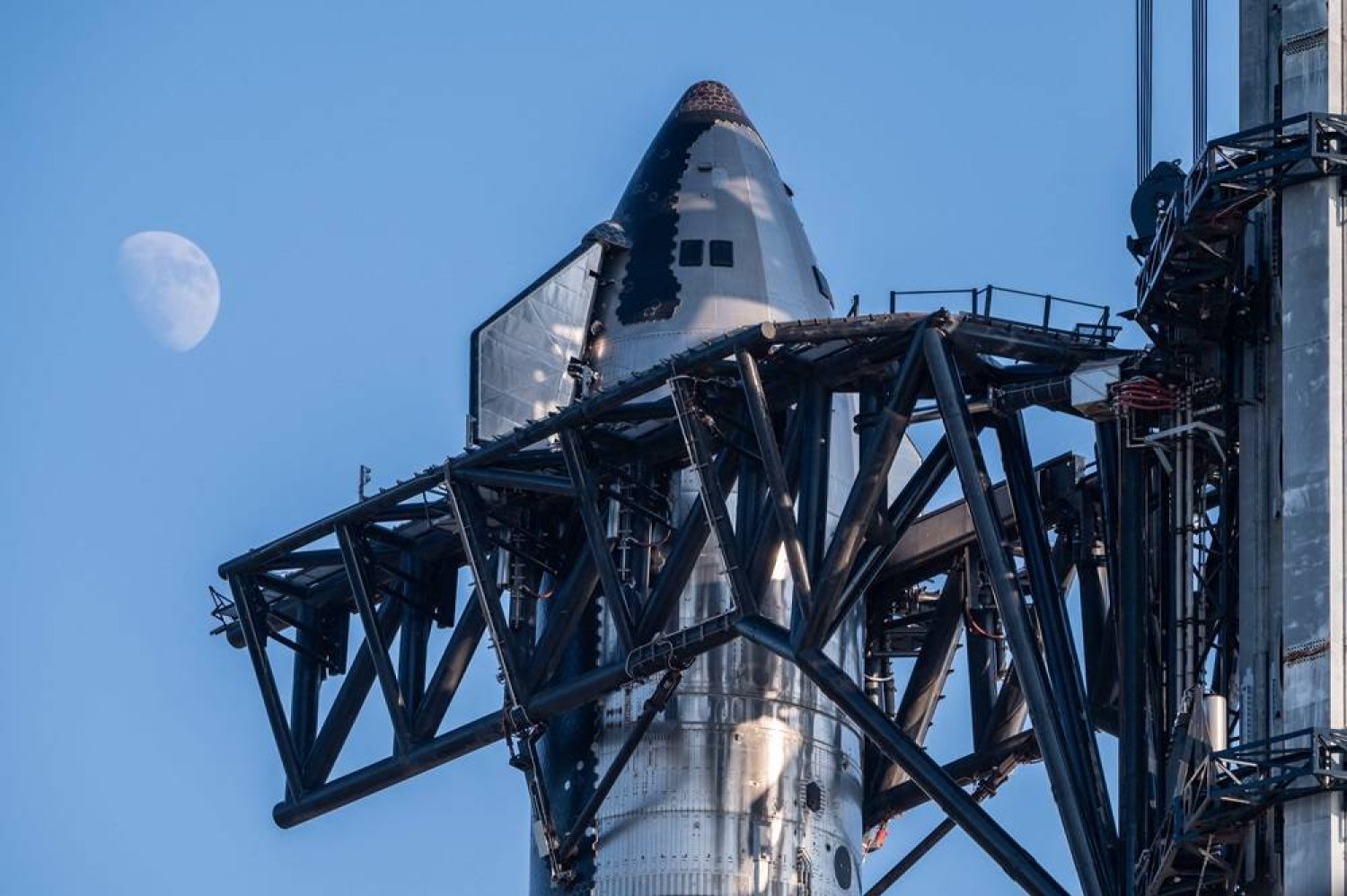
Musk’s Cosmic Aspirations and Engineering Challenges
Elon Musk has always been vocal about his dreams of colonizing Mars and beyond. Speaking at a National Press Club gathering back in 2011, he acknowledged the immense challenge posed by Earth’s gravity when trying to develop an orbit-class rocket. Yet, he remained undeterred, stating, “We’re going to try to do it.” Fast forward to today, and it’s clear that Musk and his team at SpaceX have made significant strides in overcoming those engineering hurdles.
The recent successful landing has not only showcased SpaceX’s technological prowess but also served as a much-needed validation for Musk amidst growing scepticism about his ability to deliver on various ambitious projects across his corporate empire. As he juggles leadership at Tesla, Neuralink, and Twitter, the pressure is mounting to fulfil the bold promises he has made over the years.
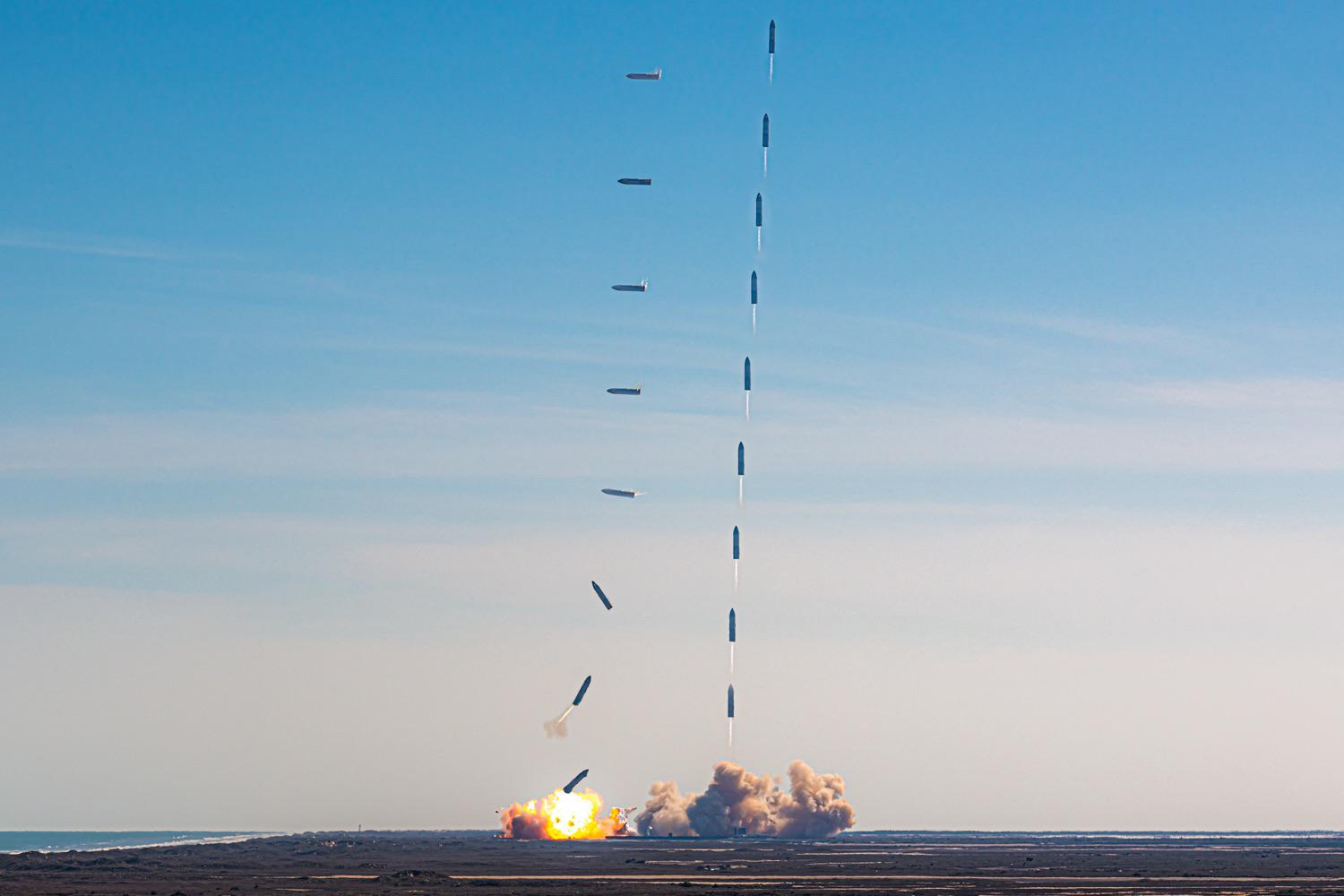
The Mixed Bag of Musk’s Ventures
Despite the triumph with Starship, doubts linger regarding Musk’s ability to consistently deliver on his visions. For instance, his 2019 declaration that Tesla would have “more than 1 million robotaxis on the road” by 2020 was met with disappointment as that target went unmet. More recently, the rollout of Tesla’s Cybercab, launched during Robotaxi Day, failed to impress investors, resulting in a significant drop in Tesla’s stock value.
Furthermore, plans to transform Twitter into an “everything app” under its X brand have encountered hurdles, including regulatory scrutiny. The California Coastal Commission recently rejected a request for more frequent SpaceX launches, citing concerns related to Musk’s political posts and their potential impact on public perception and regulatory relations.
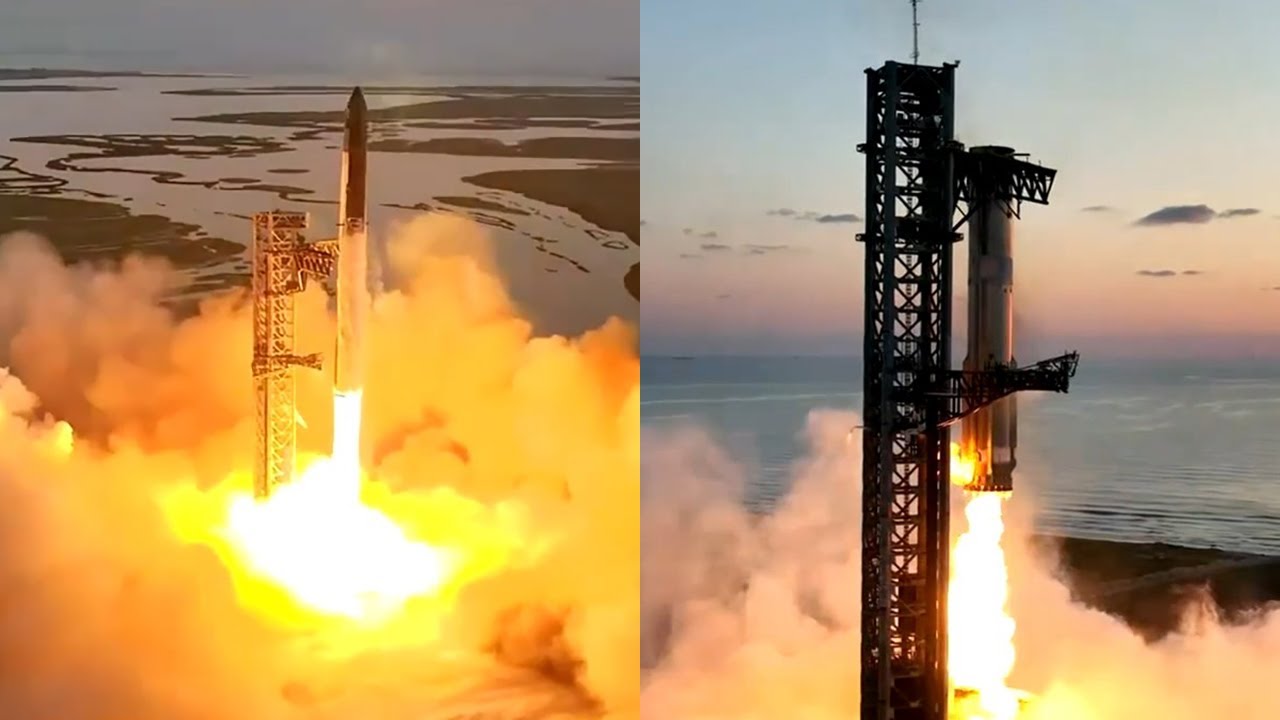
A Moment of Triumph and the Road Ahead
Despite the challenges, Musk’s latest accomplishment serves as a powerful reminder that he still has the ability to achieve what many deem impossible. After the successful landing, SpaceX employee Dan Huot captured the emotions of the moment with a heartfelt post-launch message: “I’m crying right now.”
Additionally, tech industry leaders like Google CEO Sundar Pichai applauded the feat, saying, “Huge congrats, have to admit, rewatched the video many times over, incredible to see!” Such sentiments reflect the excitement and support from those who recognize the significance of SpaceX’s achievements.
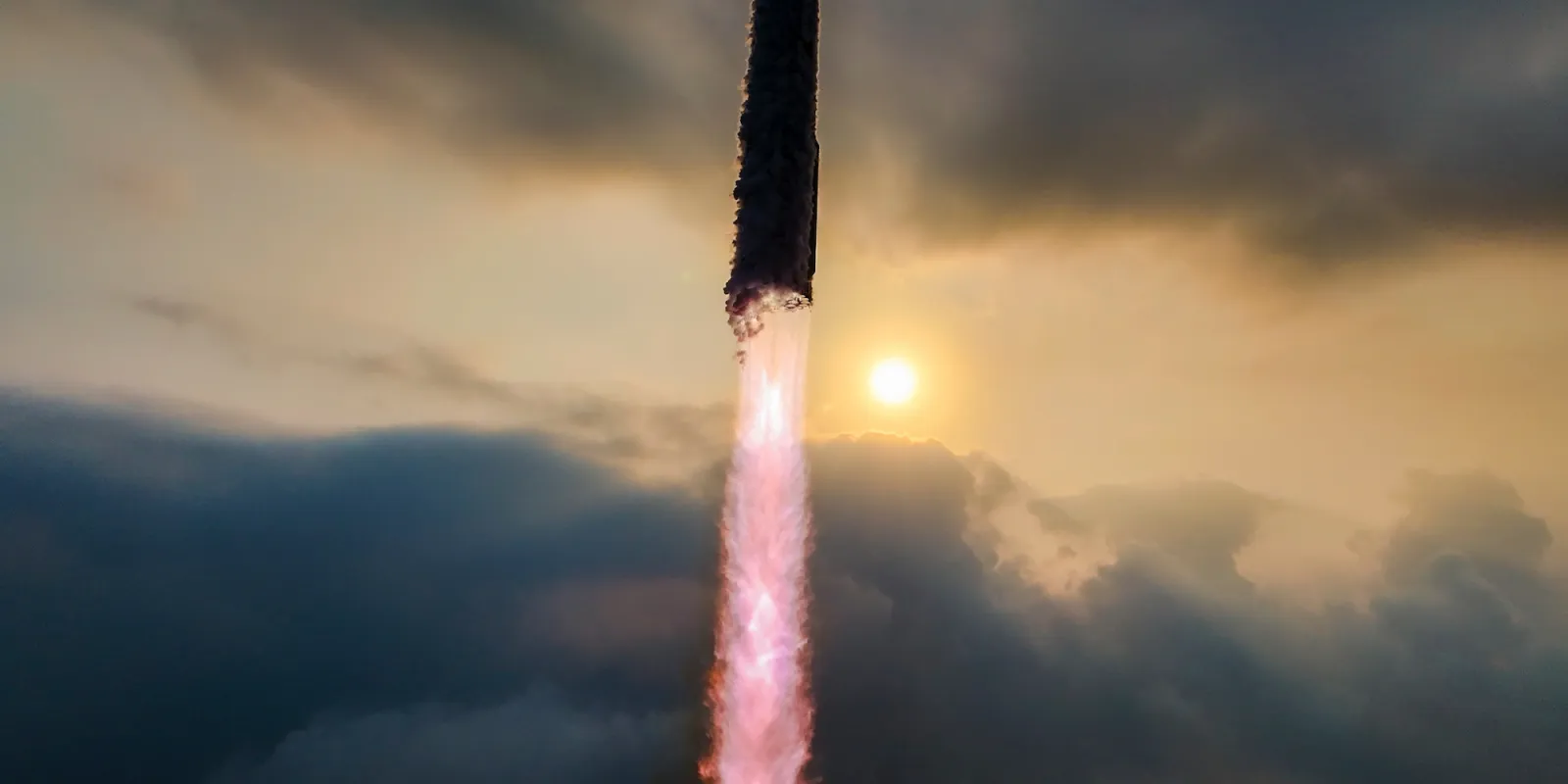
Looking ahead, Musk’s next test lies in NASA’s Artemis mission, where SpaceX aims to complete a crewed orbit of the Moon next year and participate in the Artemis III mission, which aspires to land humans on the Moon for the first time since 1972. As his old friend Peter Thiel famously said, “Never bet against Elon.”
With the eyes of the world watching, Musk has the opportunity to reaffirm his legacy in space exploration and prove that even the loftiest ambitions can become reality with determination and innovation.
As the space race intensifies, one thing is clear: Elon Musk and SpaceX are not just aiming for the stars; they are making strides to reach them.

